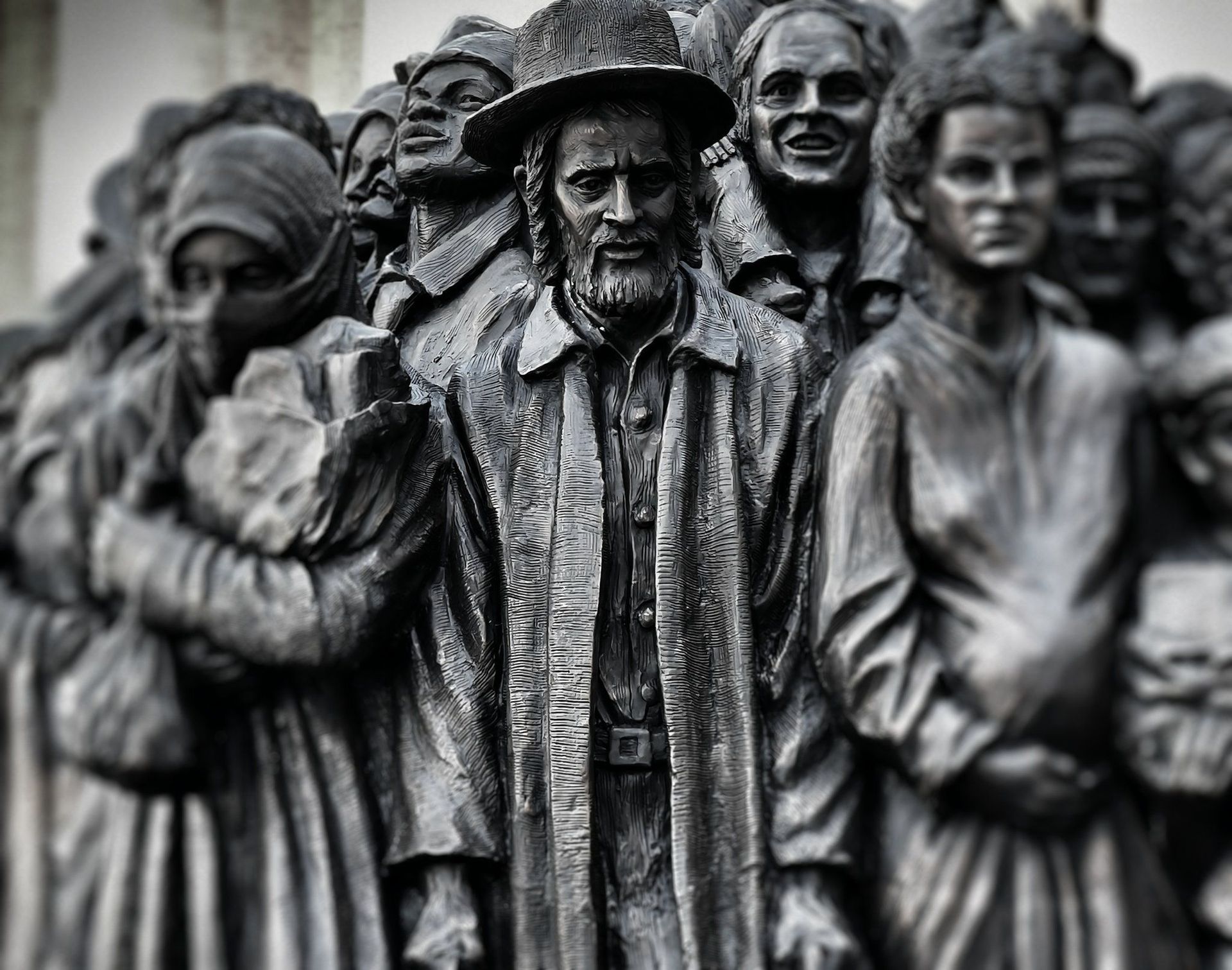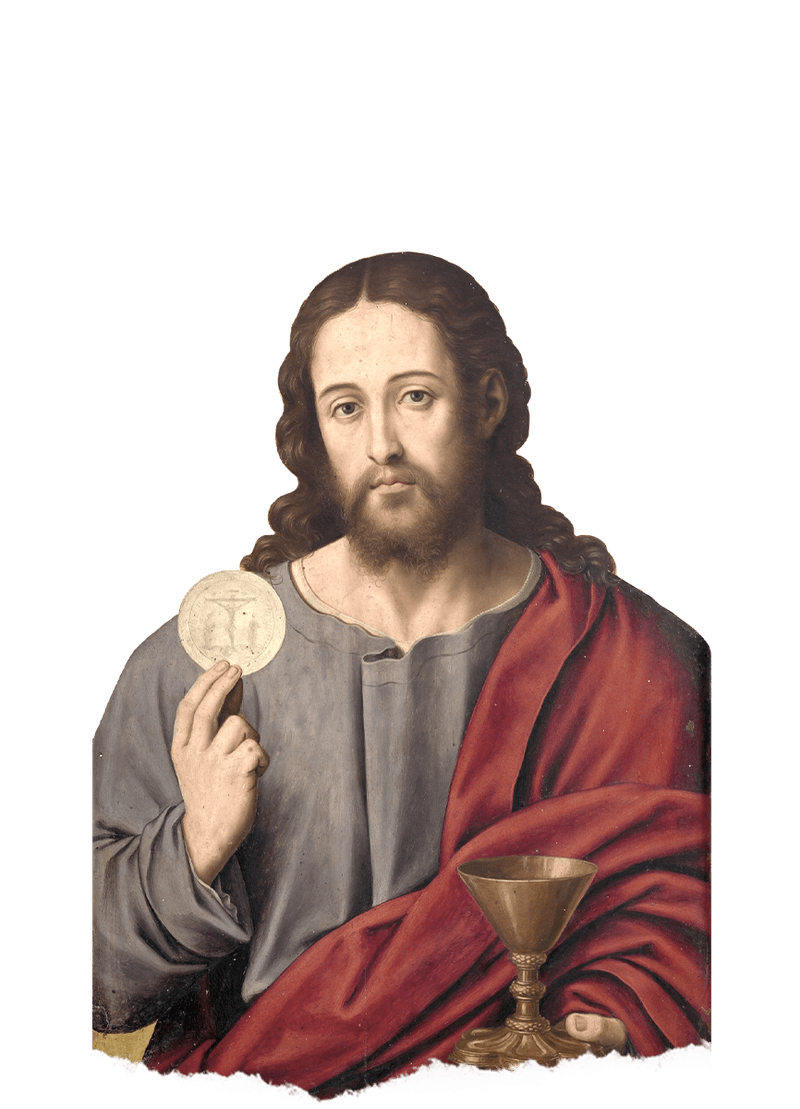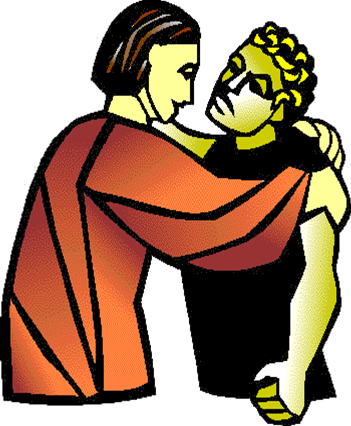The mystery of the incarnation of the Son of God will always transcend human experience. This divine inbreaking is a historical fact we won’t completely understand in mere human terms. If there’s a way to approximate or get closer to the depths of divine reality, we turn to the liturgy: praise and worship, glad rejoicing, and adoration which reminds me of the saying, lex orandi (law of praying), lex credendi (law of believing), lex vivendi (law of living). We come to church to gaze, behold and adore the nativity scene and live that God’s life. Its purpose is for us humans to be astonished and be awed at the sight. Luke put emphasis on the manger, swaddling cloth and Bethlehem. Francis of Assisi began the tradition of Christmas crib/creche to bring the memory of the baby Jesus which we find in our churches this Christmas fresh and alive. Christmas is God’s self-abasement. His self-emptying is not what our ancestors in faith expected. The humility of God coming in human form, bone of our bone and flesh of our flesh has humbled us. The incarnation (birth of Jesus) is bending low and that’s what we do on Christmas.
Christ is born to us. Across town, the lights and sounds of Christmas are everywhere. It is sad to see establishments having more lights than our churches. Next year, we will designate a Christmas lighting evening in our churches to jumpstart the season. Lights entertain us by virtue of the season but at the same time, serve as a reminder of the true unconquered light of the world that transcends the inner forces of darkness. Many of us know that December 25 was once a pagan feast of the sun-god. In contrast, Christians made December 25, the birthday of the Son of God, the true fountain of light, the invisible light that proved stronger and brighter than the visible lights. God makes the sun shed light. The sun-god cannot conquer the inner troubles of humankind.
I don’t know if you find our manger too small. I thought of making a bigger one next year. And yet, our manger reminds me of the opening door of the church of the nativity. Many of us expect a wide- open door of any massive church. However, to enter the basilica you’ll have to bend low. The small door of the Basilica of the Nativity of the Lord will require any visitor bow to the waist to get in. Not only that. Below the main floor of the church is the grotto and the manger which will take you another few steps down through a narrow doorway. As a Pilgrim, you’ll have to go down the marble steps to see the site of Christ’s birth. Pilgrims touch, kiss, stoop, kneel and take videos and pictures at the silver star. A few feet away is a sunken area which is the manger, the place where Mary laid the newborn Jesus. What amazed me was that the exact birthplace is believed to be 100% historically accurate. The place itself is a cave adorned with marble floor, tapestries and hanging lamps. Because of the limited space in the area about 20x10 give or take and the press of the crowd which can be overwhelming, you’re only allowed a few minutes of stay. Following the visit, I said Mass with the pilgrims at the St. Joseph’s crypt.
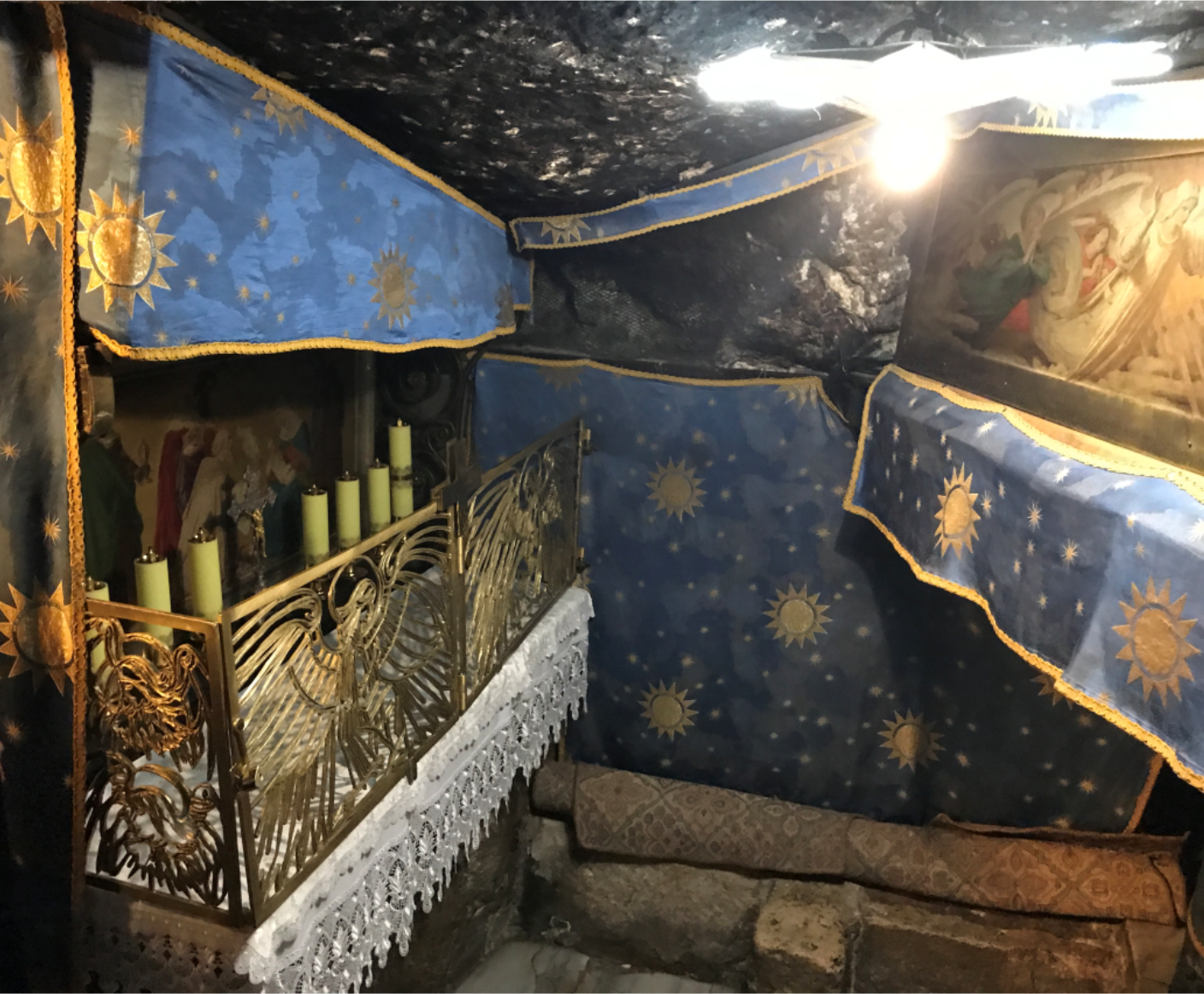
THE MANGER WHERE MARY LAID THE NEW BORN JESUS
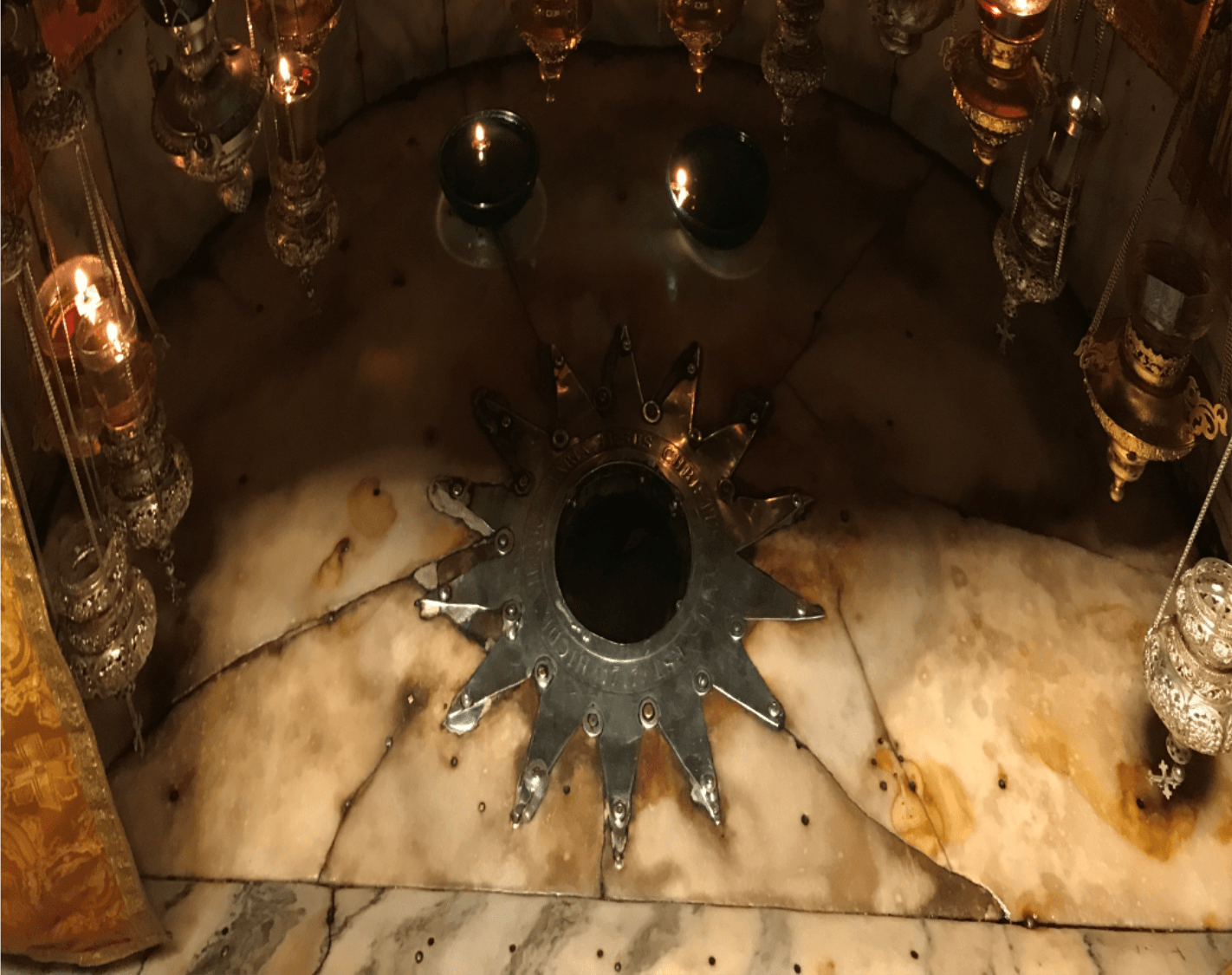
THE SILVER STAR WHERE CHRIST WAS BORN
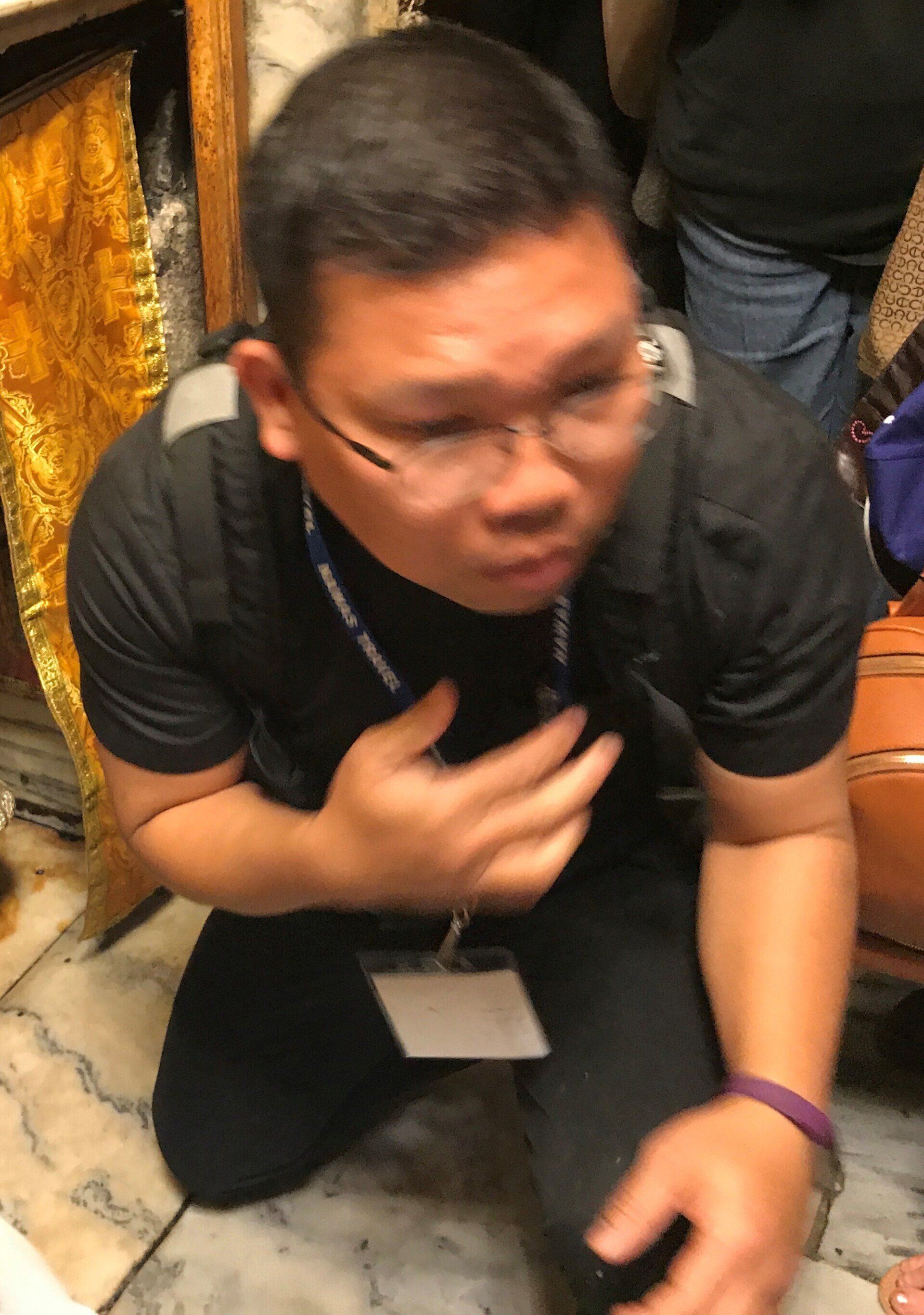
FR. JOJO AFTER KISSING THE STAR
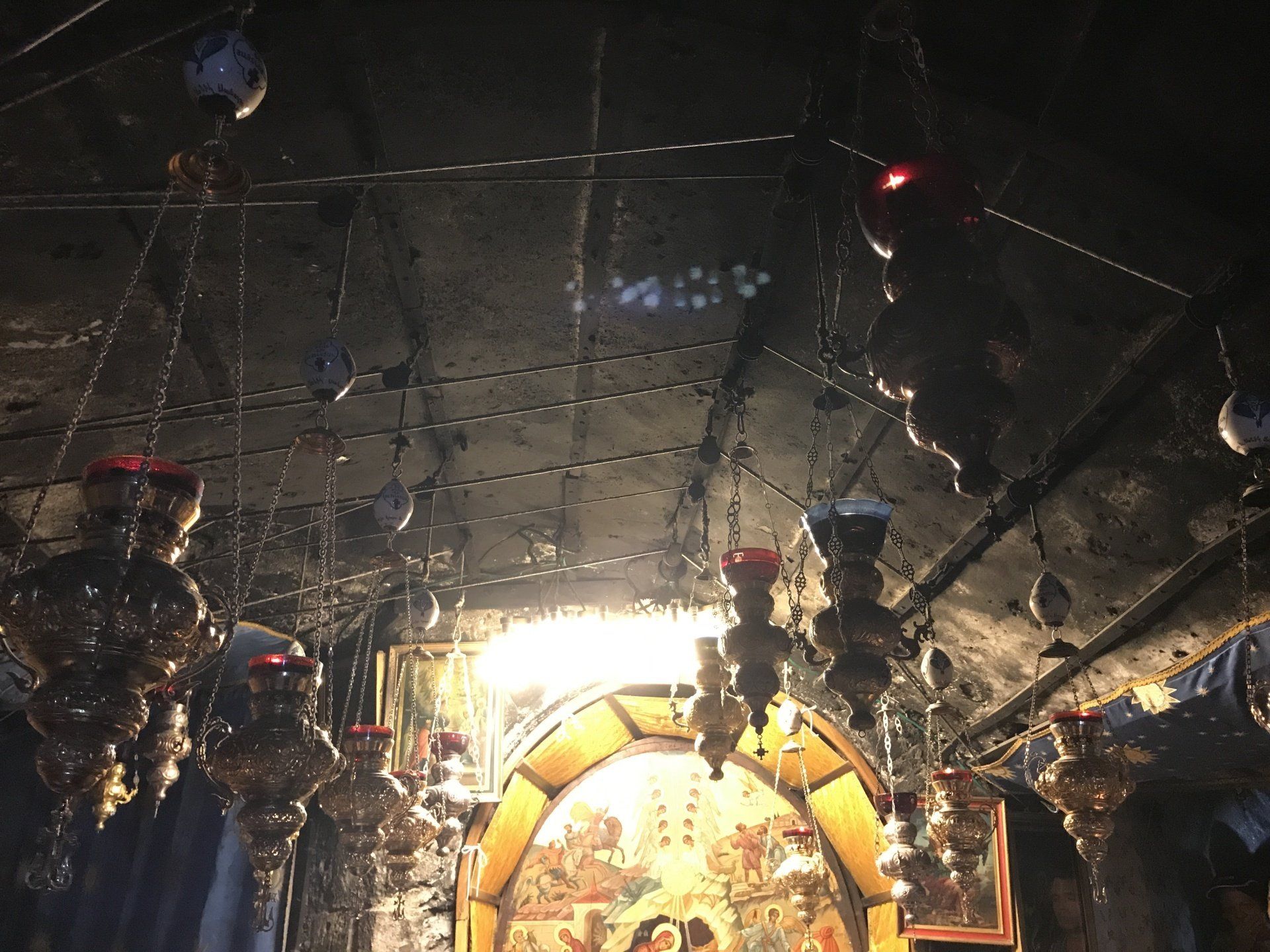
INSIDE THE GROTTO, BELOW THE MAIN FLOOR
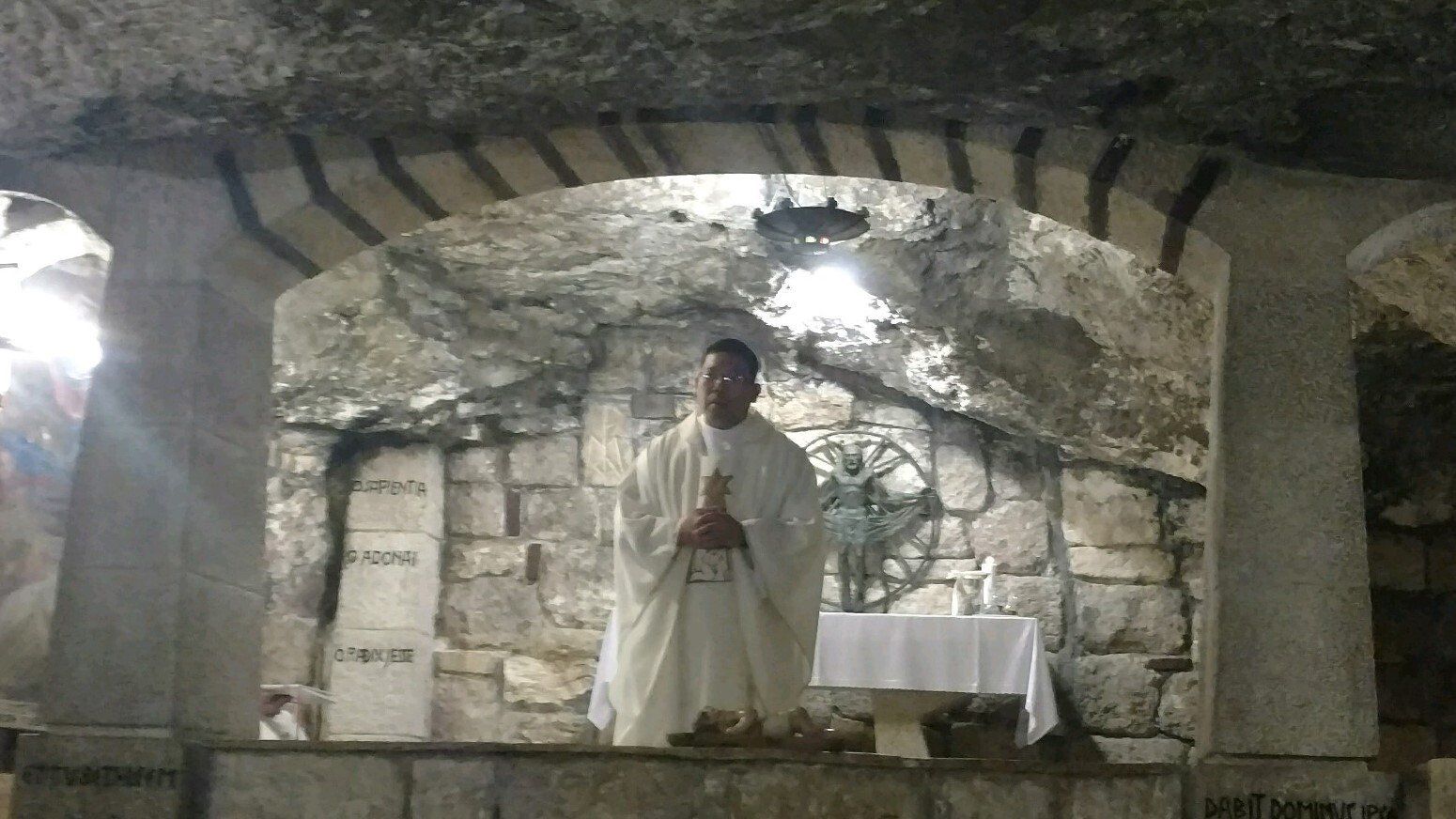
MASS AT ST. JOSEPH CAVE (CHURCH OF THE NATIVITY)
PARISH BLOG
